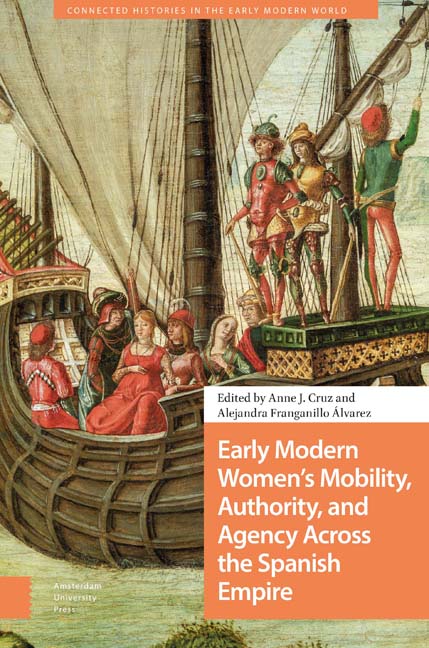10 - Mobilizing Female Relatives : The Countess of Berlepsch’s Strategies at the Habsburg Courts
Published online by Cambridge University Press: 08 May 2024
Summary
Abstract
This chapter analyzes the journey of Catherine von Cramm (1682–1738) a German baroness who traveled from the Holy Roman Empire to the Spanish Monarchy to obtain a career at court and ascend socially. Recommended by her aunt and the Spanish queen's confidante, the Countess of Berlepsch, for a court appointment in Madrid, she converted to Catholicism and obtained a position at the Viennese court. From there, she traveled to serve at the Madrid court in the Spanish queen's household. Her aunt's patronage facilitated Catherine's arrival and incorporation to both courts. This study will shed light on the mechanisms of favor and mobility that allowed Catherine von Cramm to serve at the Madrid court and ascend socially through marriage.
Keywords: Catherine von Cramm, Maria Gertrudis, countess of Berlepsch, women at court, Maria Anna of Neuburg, female patronage, early modern women
In 1696, Maria Gertrudis, baroness and future countess of Berlepsch, wrote a petition letter from the Madrid court to Johann Wilhelm, elector of the Palatinate-Neuburg, soliciting his protection for her older sister, Anna Elisabeth Wolff von Gudenberg, and her sister's daughter, Catherine von Cramm (1682–1738). The elector was brother to the queen, Maria Anna of Neuburg, married to the Spanish monarch, Carlos II (r. 1690–1700), and whom the countess served. The countess hoped that the elector's favor would ensure her relatives’ future after her brother-in-law's death and ensure their conversion from Protestantism to Catholicism. Converting to Catholicism would allow the countess's family to serve in a Catholic court and thus show their devotion to the Habsburg family, especially Emperor Leopold I. The countess of Berlepsch favored a Catholic court environment where her niece, Catherine von Cramm, could obtain a good education, make social connections, increase her family's capital, and support the career of male and female family members. She thus exemplifies how widowed noblewomen in particular helped their female relatives, facilitating access to restricted environments, such as the female household of a sovereign, to ensure their career and their future.
Catherine's mother, Anna Elisabeth, belonged to an old Protestant family of the lower nobility of the Holy Roman Empire, the Wolff von Gudenberg, who were members of the althessische Ritterschaft, a foundation for knights of the principality of Hessen (Bock 2019, 398–99).
- Type
- Chapter
- Information
- Publisher: Amsterdam University PressPrint publication year: 2024



